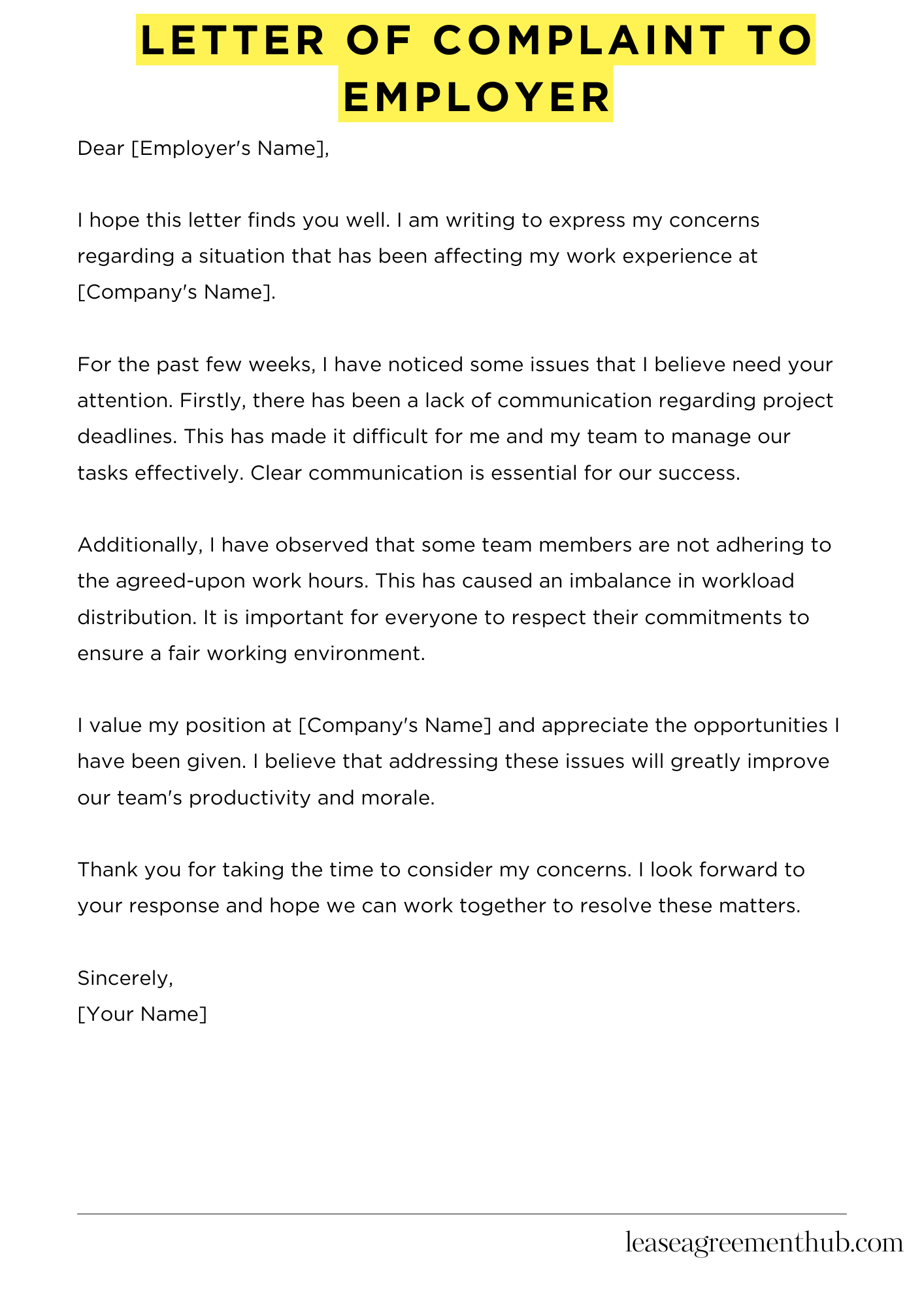A Letter of Complaint to Employer is a formal way for employees to express their concerns or dissatisfaction about workplace issues. This letter serves to address problems such as unfair treatment, unsafe working conditions, or inadequate resources. Its main purpose is to communicate issues clearly and seek resolution.
In this article, we will provide various templates and examples of Letters of Complaint to Employers. These samples are designed to help you craft your own letter effectively. Whether you need to address a specific incident or a general concern, these templates will guide you in expressing your thoughts professionally.
Writing a complaint letter can be daunting, but it doesn’t have to be. With our easy-to-use samples, you can feel confident in your ability to communicate your concerns. We aim to make this process simpler for you, ensuring your voice is heard in the workplace.
Letter Of Complaint To Employer
[Your Name]
[Your Address]
[City, State, Zip Code]
[Email Address]
[Phone Number]
[Date]
[Employer’s Name]
[Company’s Name]
[Company’s Address]
[City, State, Zip Code]
Dear [Employer’s Name],
I hope this letter finds you well. I am writing to express my concerns regarding a situation that has been affecting my work experience at [Company’s Name].
For the past few weeks, I have noticed some issues that I believe need your attention. Firstly, there has been a lack of communication regarding project deadlines. This has made it difficult for me and my team to manage our tasks effectively. Clear communication is essential for our success.
Additionally, I have observed that some team members are not adhering to the agreed-upon work hours. This has caused an imbalance in workload distribution. It is important for everyone to respect their commitments to ensure a fair working environment.
I value my position at [Company’s Name] and appreciate the opportunities I have been given. I believe that addressing these issues will greatly improve our team’s productivity and morale.
Thank you for taking the time to consider my concerns. I look forward to your response and hope we can work together to resolve these matters.
Sincerely,
[Your Name]

How to Write Letter Of Complaint To Employer
Understand the Purpose of Your Letter
Before you start writing, it is important to understand why you are writing the letter. A complaint letter is a formal way to express your concerns about a specific issue at work. This could be anything from unfair treatment to unsafe working conditions. Knowing the purpose helps you stay focused and clear in your message.
Gather Your Facts and Evidence
Collect all relevant information before you write. This includes dates, times, and specific incidents that support your complaint. If possible, gather any documents or emails that relate to the issue. Having clear evidence strengthens your case and makes your complaint more credible.
Use a Professional Tone
When writing your letter, maintain a professional tone. Avoid using emotional language or making personal attacks. Stick to the facts and express your concerns calmly. A well-written letter shows that you are serious about the issue and willing to resolve it in a constructive manner.
Structure Your Letter Clearly
Organize your letter into clear sections. Start with your contact information and the date. Then, address the letter to your employer or the appropriate person. In the body, explain the issue, provide your evidence, and state what you would like to see happen. Finally, close with a polite ending and your signature. A clear structure helps the reader understand your points easily.
Follow Up After Sending the Letter
After you have sent your complaint letter, it is important to follow up. If you do not receive a response within a reasonable time, consider reaching out to discuss your concerns. This shows that you are serious about the issue and encourages your employer to take action. Remember, effective communication is key to resolving workplace problems.
Related: